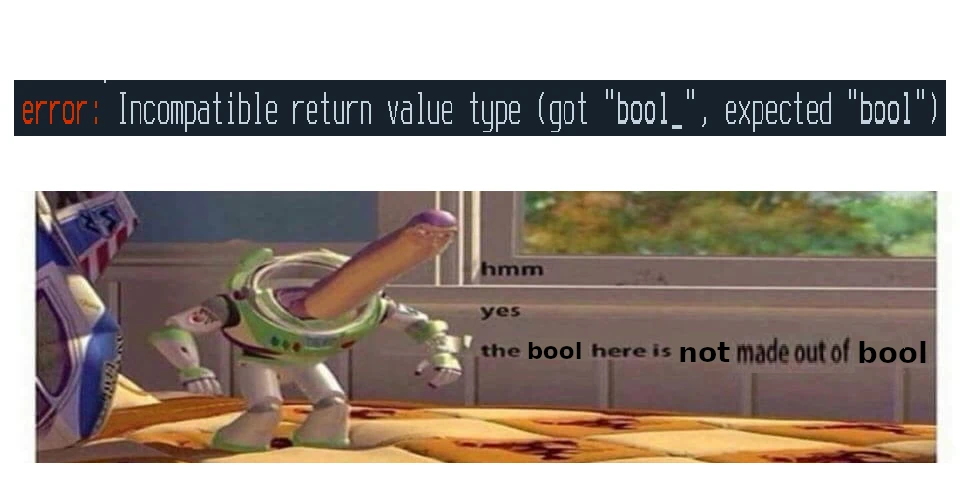311
you are viewing a single comment's thread
view the rest of the comments
view the rest of the comments
this post was submitted on 14 May 2024
311 points (91.5% liked)
Programmer Humor
31228 readers
51 users here now
Post funny things about programming here! (Or just rant about your favourite programming language.)
Rules:
- Posts must be relevant to programming, programmers, or computer science.
- No NSFW content.
- Jokes must be in good taste. No hate speech, bigotry, etc.
founded 4 years ago
MODERATORS

these dumb workarounds prevent you from shooting yourself on the foot and not allowing JS-level shit like
"1" + 2 === "12"The JS thing makes perfect sense though,
"1" is a string. You declared its type by using quotes.
myString = "1"in a dynamically typed language is identical to writingstring myString = "1"in a statically typed language. You declare it in the symbols used to write it instead of having to manually write outstringevery single time.2 is an integer. You know this because you used neither quotes nor a decimal place surrounding it. This is also explicit.
"1" + 2, if your interpreter is working correctly, should do the followingidentify the operands from left to right, including their types.
note that the very first operand in the list is a
stringtype as you explicitly declared it as such by putting it in quotes.cast the following operands to
stringif they are not already.use the string addition method to add operands together (in this case, this means concatenation).
In the example you provided,
"1" + 2is equivalent to"1" + "2", but you're making the interpreter do more work.QED:
"1" + 2should, in fact,=== "12", and your lack of ability to handle a language where you declare types by symbols rather than spending extra effort writing the type out as a full english word is your own shortcoming. Learn to declare and handle types in dynamic languages better, don't blame your own misgivings on the language.Signed, a software engineer.
TypeError is also a correct response, though, and I think many folks would say makes more sense. Is an unnecessary footgun
"1" + 2 === "12"is not unique to JS (sans the requirement for the third equals sign), it's a common feature of multiple strongly typed languages. imho it's fine.EDIT: I did some testing:
What it works in:
What produces a number, instead of a string:
What it doesn't work in:
And MATLAB appears to produce 51, wtf idk
The numeric value of the '1' character (the ASCII code / Unicode code point representing the digit) is 49. Add 2 to it and you get 51.
C (and several related languages) will do the same if you evaluate
'1' + 2.Oh that makes sense. I didn't consider it might be treated as a char
Well, C has implicit casts, and it's not that weird (although results in some interesting bugs in certain circumstances). Python is also funny from time to time, albeit due to different reasons (e.g.
-5**2is apparently -25 because of the order of operations)I don't see how your example is 'funny'. That's what you expect to get. -5^2^ is -25. (-5)^2^ = 25.
And how's that different from js's
"1" + 2? One can always convert a number to string, and only sometimes -- a string to a number, so it's pretty logical to go with the former.Which is correct
Well, the link doesn't load for me, so if that's smth related to python and not a justification of the behavior from math's pov, I know that's expected. Hence,
But just as well is "1" + 2.
Yeah, they're doing an upgrade right now. Yes, it's the Maths explanation - -25 is the correct answer.